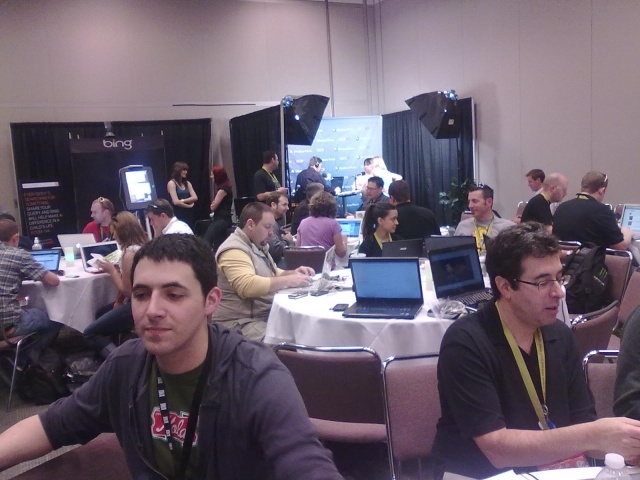Don't get me wrong, there are phones everywhere, although they seem to be attached to notebooks, moleskins, Franklin day planners and Filofaxes (so I feel right at home), but the mega phone that changes the world 'that everyone has' is, well, suddenly back down to the same ratio as its market percentage implies.
There’s also been a change in the attitudes around Nokia. Not that SXSW Interactive had any more Nokias in the hands of delegates than last year, but the number of people that were asking about my 5230, seeing what it could do and giving it serious consideration, was (especially due to its extreme budget status) a surprise to me.
My SXSW phone in 2009 was a Nokia 5800 and to the eye it’s essentially the same device and therefore a valid emotional comparison can be made. Nokia also had a relatively effective show here, with a number of meet and greets and the N97 mini on display – they didn’t push the boat out or go overboard on budget, but they were there and managed to reach out to a significant number of influencers.

What was the attraction? To be honest, I think it’s familiarity. The marketplace in the US for smartphones has become more accepted in the last year; the number of smartphones with large touch screens, coupled with a choice of operating system - WebOS and Android, alongside the existing iPhone OS and 'big in Enterprise' Windows Mobile, means that even the USA mindset is changing and looking at all the options on a more level playing field.
So Nokia gets a chance.
The 'Tube' style of the 5800 lineage (now including the 5230 and the X6) now fits a mental picture of what many think a smartphone should be – touchscreen; significant number of pixels; navigation by finger; a proper online experience that gives you all the elements you have from a desktop; media playback and capture; and to a certain extent, battery life.
The first few minutes experience, that vital time when emotion decides if a sale is going to happen has changed for Nokia over the last twelve months. Rather than mental hurdles being jumped over, more emphasis is being placed on what a phone does rather than the brand name. The accepted wisdom seems to be that more than one company can make a smartphone that works.
Does this fix all the little niggly problems we know that Symbian and Nokia have right now? No. The out of the box experience of the current 5th Edition phones is poor, and there is too much complexity. I doubt that the average salesmen in the stores that carry the Symbian devices have the training to demo the phone as I did.
But Symbian^3 is on the horizon, and should bring the UI to at least the perceived level of Android. Nokia and other Symbian licensees have a mountain to climb, but I can see that a solid base camp has been set out, and the consumer market, at least in America, is going to be willing to give Nokia and others a chance in the second half of the year. Not a big chance, but a chance nonetheless. And that was something that looked doubtful a year ago.
-- Ewan Spence, March 2010.
